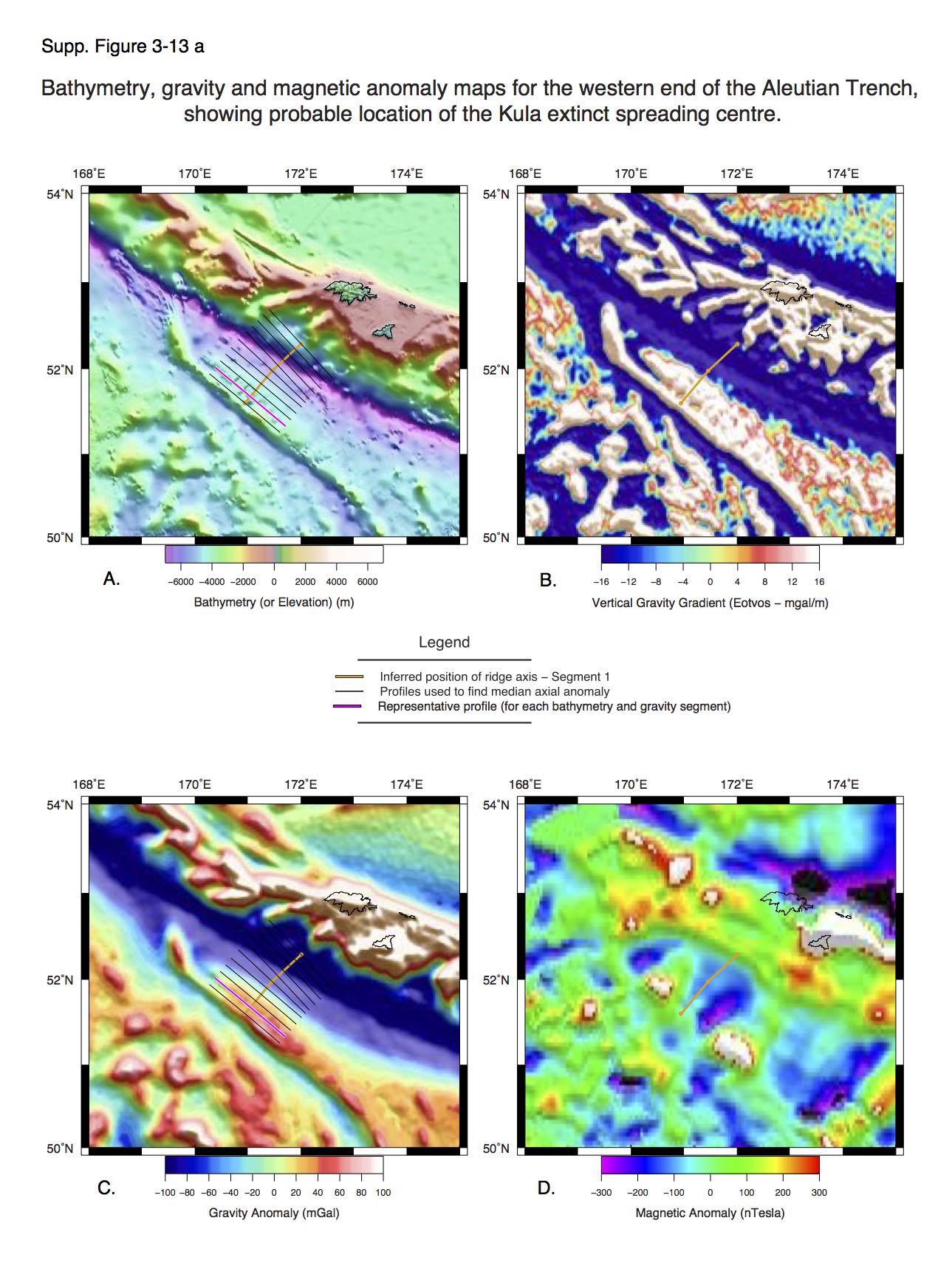| Ocean: | Pacific |
| Spreading center type: | Large-scale extinct MOR |
| Time of cessation: | Ca. 40 Ma, chron C18r (Lonsdale, 1988) |
Splitting of the Farallon plate in the Late Cretaceous produced the Kula plate, but the most of the crust from this plate is thought to have been subducted at the active trenches in the north Pacific. Only a small section of crust formed at the former Pacific-Kula plate boundary still exists where it is thought to have fused with Pacific plate in Eocene (Lonsdale, 1988).
The extinct Kula-plate spreading centre is inferred on the basis of a short (75 km), bathymetric trough orthogonal to the Aleutian Trench and symmetric magnetic anomalies (Lonsdale, 1988). The ridge is believed to have ceased at 43 Ma, after a significant change in relative plate motions between the Pacific and Kula plates leading to highly asymmetric spreading (Lonsdale, 1988).
The geophysical characteristics of this short segment of ridge are strongly influenced by its proximity to the Aleutian Trench, which makes analysis of the gravity structure and bathymetric relief on the scale of our analysis difficult. For this reason we do not include the ridge in our statistical analysis.
Lonsdale, P., 1988, Paleogene history of the Kula plate: Offshore evidence and onshore implications, Bulletin of the Geological Society of America, v. 100, p. 733–754.


